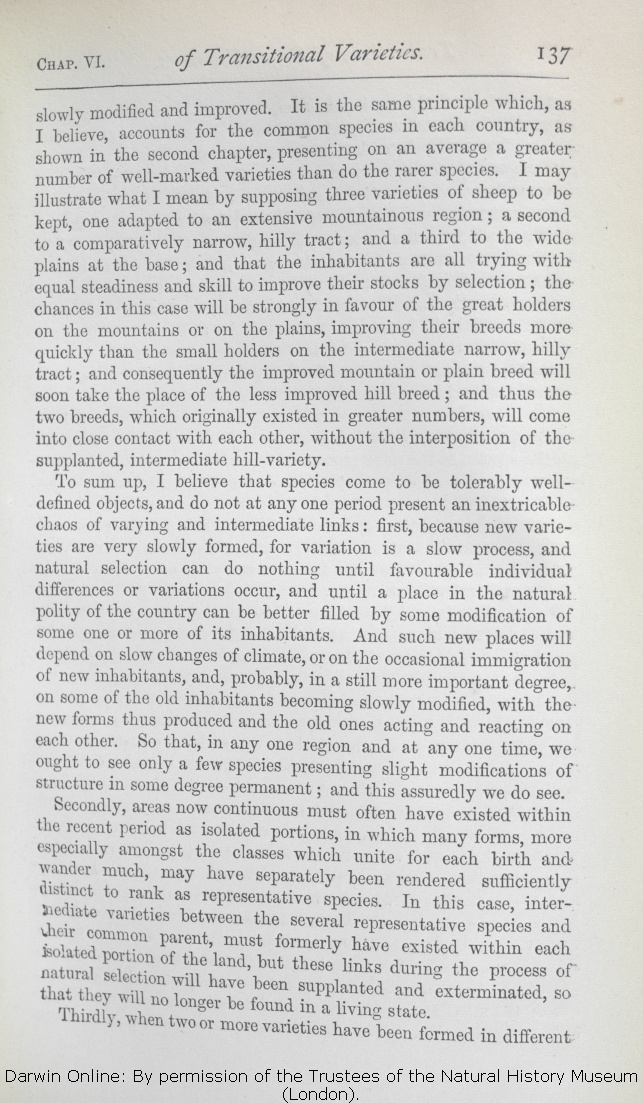slowly modified and improved. It is the same principle which, as I believe, accounts for the common species in each country, as shown in the second chapter, presenting on an average a greater number of well-marked varieties than do the rarer species. I may illustrate what I mean by supposing three varieties of sheep to be kept, one adapted to an extensive mountainous region; a second to a comparatively narrow, hilly tract; and a third to
the wide | the wide 1872 | | wide 1859 1860 1861 1866 1869 |
| plains, 1872 | | plains 1859 1860 1861 1866 1869 |
| hill variety. 1872 | | hill-variety. 1859 1860 1861 1866 1869 |
|
|
To sum up, I believe that species come to be tolerably well-defined objects, and do not at any one period present an inextricable chaos of varying and intermediate links:
first, | first, 1869 1872 | | firstly, 1859 1860 1861 1866 |
| variation 1859 1860 1861 1869 1872 |
| because new varieties are very slowly formed, for variation 1866 |
| ..... 1869 1872 | | very 1859 1860 1861 1866 |
| individual differences or variations 1869 1872 |
| variations chance to 1859 1861 1866 |
| varia- tions chance to 1860 |
| to see only 1872 |
| only to see 1859 1860 1861 1866 1869 |
|
|
Secondly, areas now continuous must often have existed within the recent period
as | as 1869 1872 | | in 1859 1860 1861 1866 |
| formerly 1859 1860 1861 1866 1872 | formerly 1869 |
| within each isolated 1866 1872 |
| in each broken 1859 1860 1861 |
| formerly within each isolated 1869 |
| during the process of natural selection will have been supplanted and exterminated, 1866 1869 1872 |
| will have been supplanted and exterminated during the process of natural selection, 1859 1860 1861 |
| be found 1869 1872 | | exist 1859 1860 1861 1866 |
|
|
| Thirdly, when two or more varieties have been formed in different
|









